February 18th, 2015
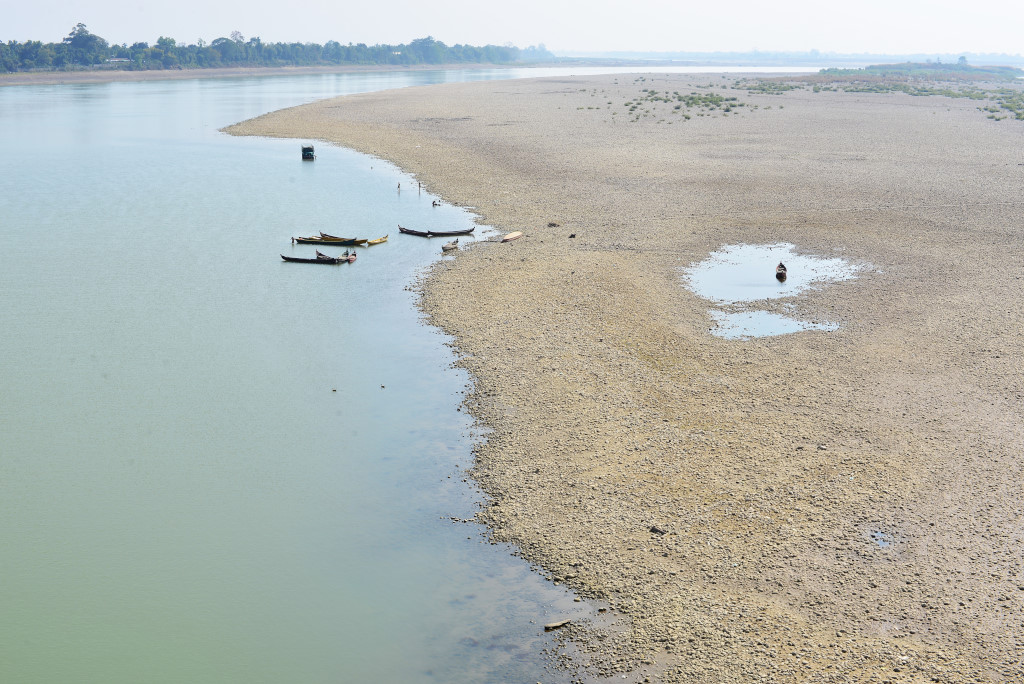
The day begins with the usual annoying rabid barking of the neighborhood dogs, left by whatever owners they may or may not have to their own sad devices. The hotel seems entirely empty, other than the Chinese owner scurrying through the hallways, loudly barking orders into his phone. He migrates to the lobby, chain smoking and speaking agitatedly to someone else in his native tongue.
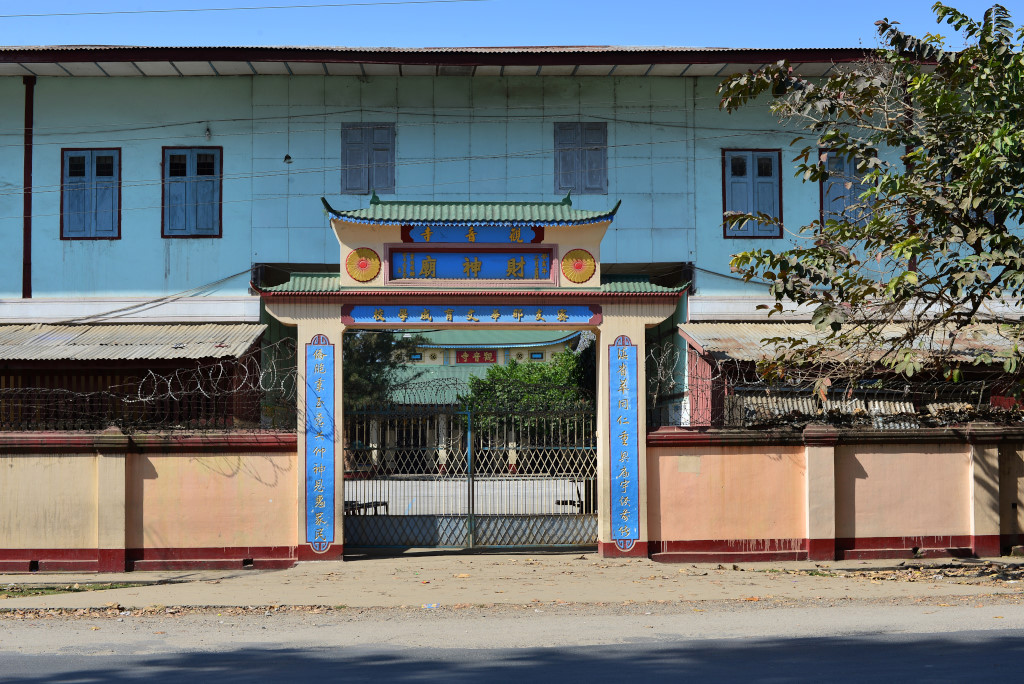
On to the YMCA to pick up my fancy rental bicycle. Passing along the road that runs by the railway station, I can see that the large KBZ bank has an ATM, and if this town has ATMs, I doubt I will run into an issue with procuring cash anywhere else in the country.
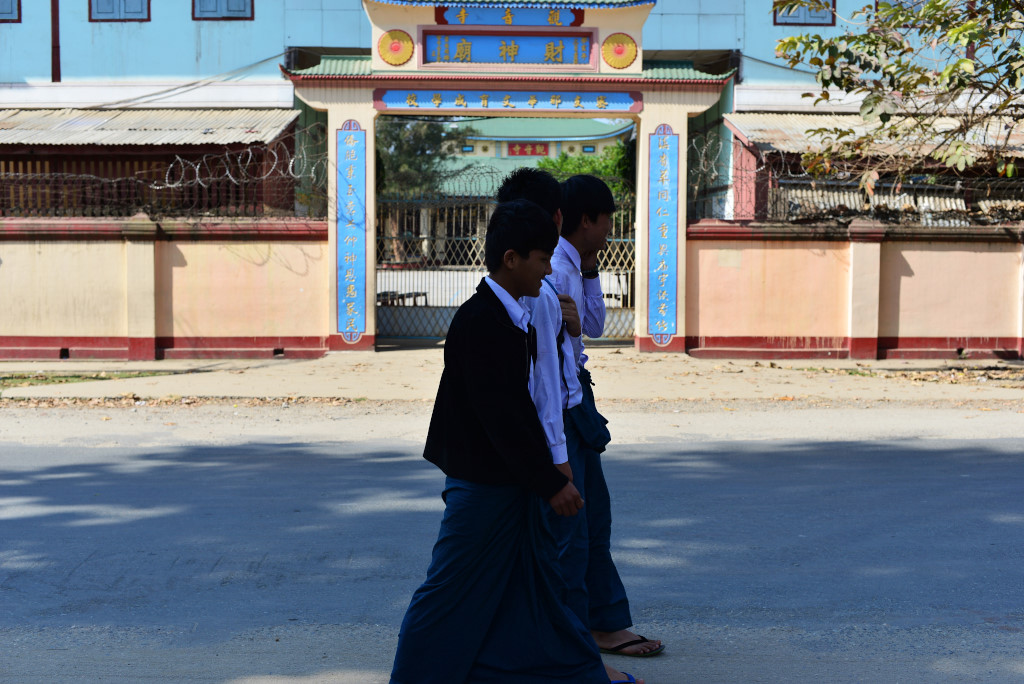
The older and very demure woman at the YMCA shows me to the bicycle, an ancient and rickety Chinese contraption that hasn’t been cleaned in a long time, an extremely battered leather seat with the post in the lowest position possible, and even a small hornet’s nest attached to one of the spokes. I was assured that this would be a new bike in good condition, set up for a tall person to ride, all for 4,000 kyat, four times what I would have paid for a a better bike in Mandalay – and you are seriously giving me this ancient contraption?
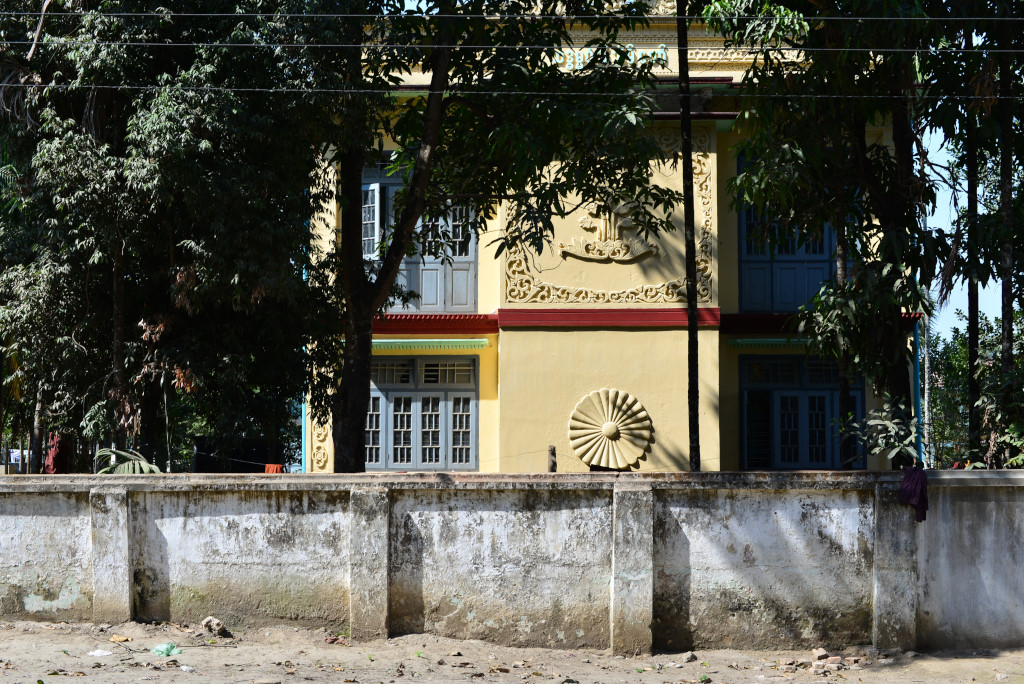
On the river road, heading further south, the atmospheric teak bungalows set in leafy compounds continue, interspersed by a few modest Buddhist temples and Christian churches. Occasional moldering stone buildings with modernist decorative embellishments appear, the date emblazoned on the upper portion of the wall, pointing sooner to the debilitating effects of the climate and lack of upkeep, rather than actual age.
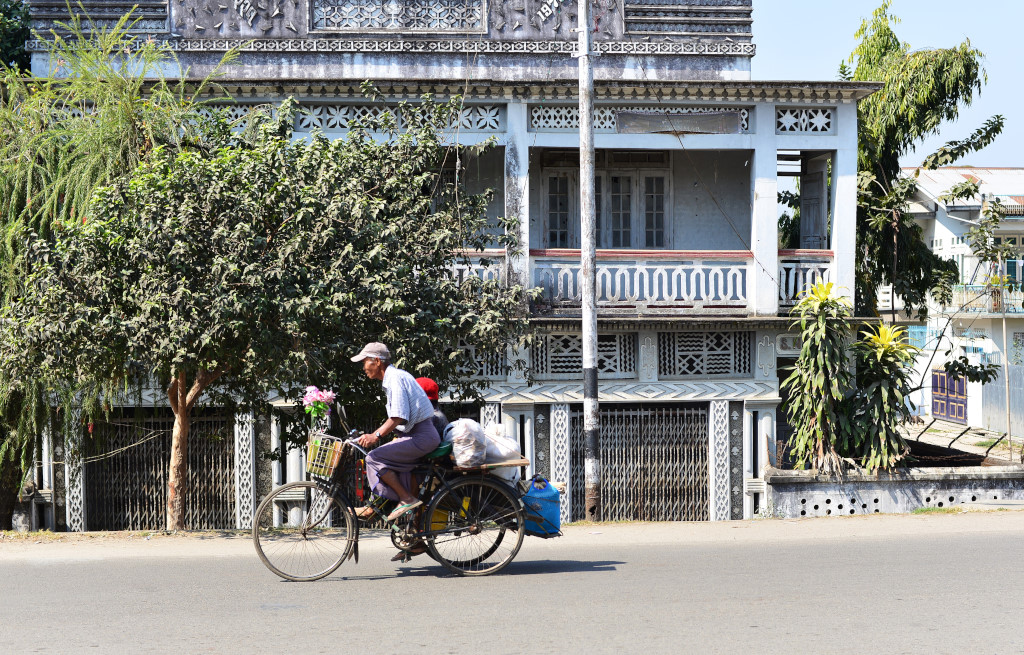
As usual, I find it difficult to keep my itchy fingers from my camera, and every time I stop and prop the ancient bicycle against one of the stocky older trees, locals stop to smile and wave. Not to forget the beautiful Hindu temple, which I would like to get some daytime interior and rooftop shots of, the drama of the views underlined by the proximity to broad river below. And so close to the river, how could I pass up the opportunity to visit the Pizza Korner again for a fairly decent coffee, the internet shockingly working again, and at lightning speed – until my laptop battery dies. If it’s not one thing, it’s something else …

I need to secure onward travel to Bhamo, and hence look for the travel agency that the Indians told me about yesterday. Rambling through the streets in the centre that mouth on the main road running by the river, the only travel agency I find is in a large open space that doubles as lamp store. I am pointed to one of the younger women, who can allegedly speak some English, but it quickly becomes apparent that her English is very rudimentary, and hence probing her about the details of traveling to Indawgyi Lake is somewhat pointless.
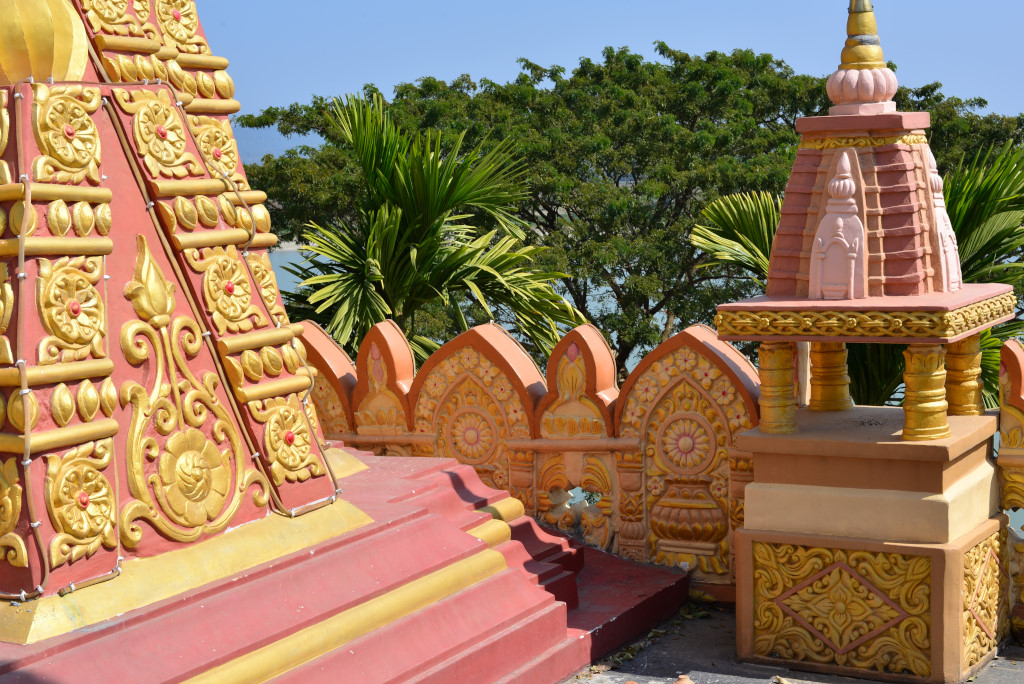
According to the Lonely Planet guide, it is possible to travel there, first taking a train back to Hopin (just what I am dying to do) and then hitch a ride on an old shared truck over an excruciatingly bad dirt road to arrive several hours later at some village with a single guesthouse, from which you can kayak on the lake towards some floating temple, observing the rich bird life on the way. It sounds great, but if no one in the business can corroborate any of this on the ground in the provincial capital – or at least assure me that I won’t come down in a hail of bullets en route, then I would happily pass and spend my time elsewhere.
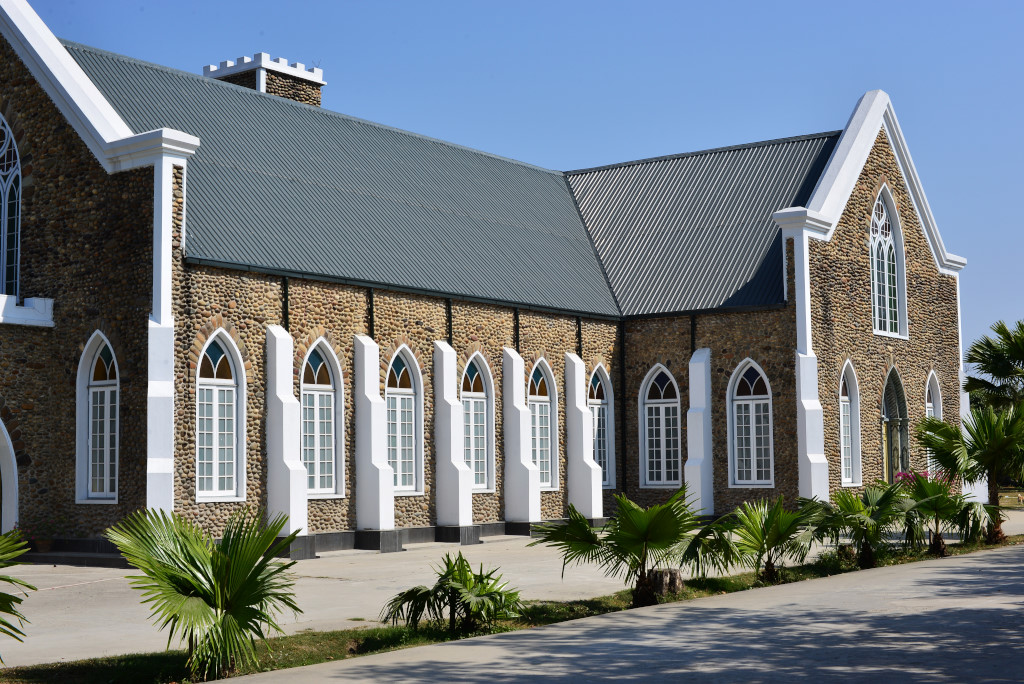
The same is true for the possibility of trekking in the mountains here or around Putao – at what point are you just spending a lot of effort and money to do something whose value largely amounts to being a member of a more exclusive travel club? Of course, that is really the point for travelers – to have as many and as exclusive experiences as possible. After some pointless back and forth, I switch gears, telling her that I want to buy a plane ticket to Bhamo, a hilarious misunderstanding arising when she interprets what I said to be that I want to fly to Indawgyi Lake.
In retrospect I suppose the local oligarchs and generals do fly into such remote country locations to check up on their feudally-run jade mines, although their slave labour probably isn’t going to boarding any Myanmar Airways flight into the deep countryside anytime soon.
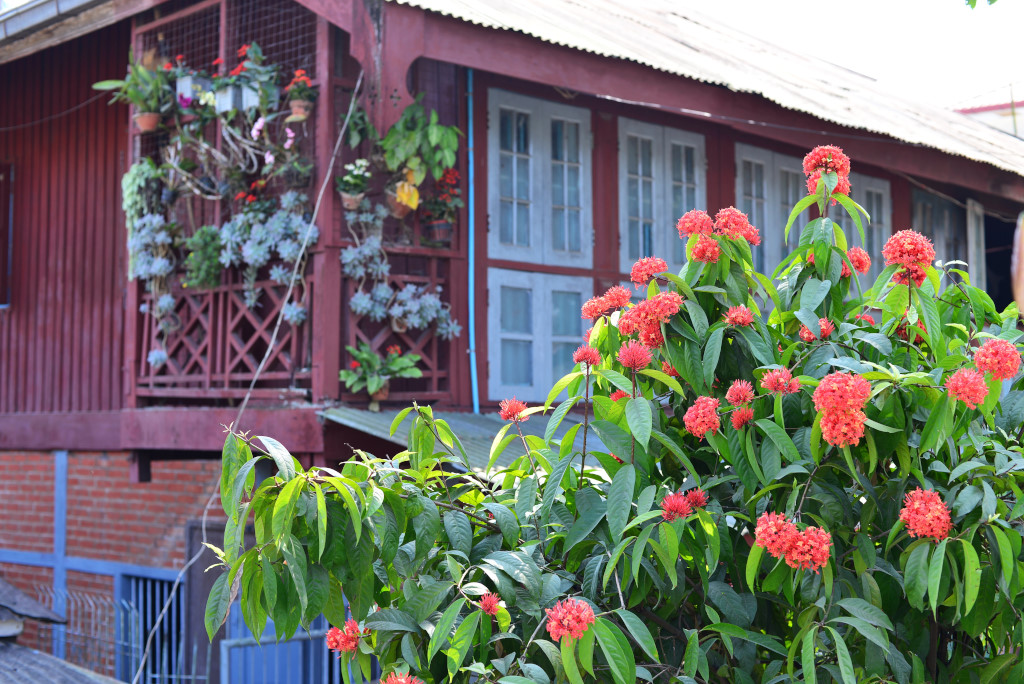
Frankly, I am fairly shocked that there are actually planes flying anywhere in this country, but looking at the publicity on the wall behind them, it seems as if there are at least nine local airlines flying in Myanmar. Booking the flight to Bhamo becomes complicated, first in that she seems to occupy herself with a number of other tasks, ignoring me altogether, but then after probing her, she concedes that she is waiting for a confirmation from Mandalay, as they need to book the e-ticket and then receive a confirmation fax. The fax arrives and I have my ticket.
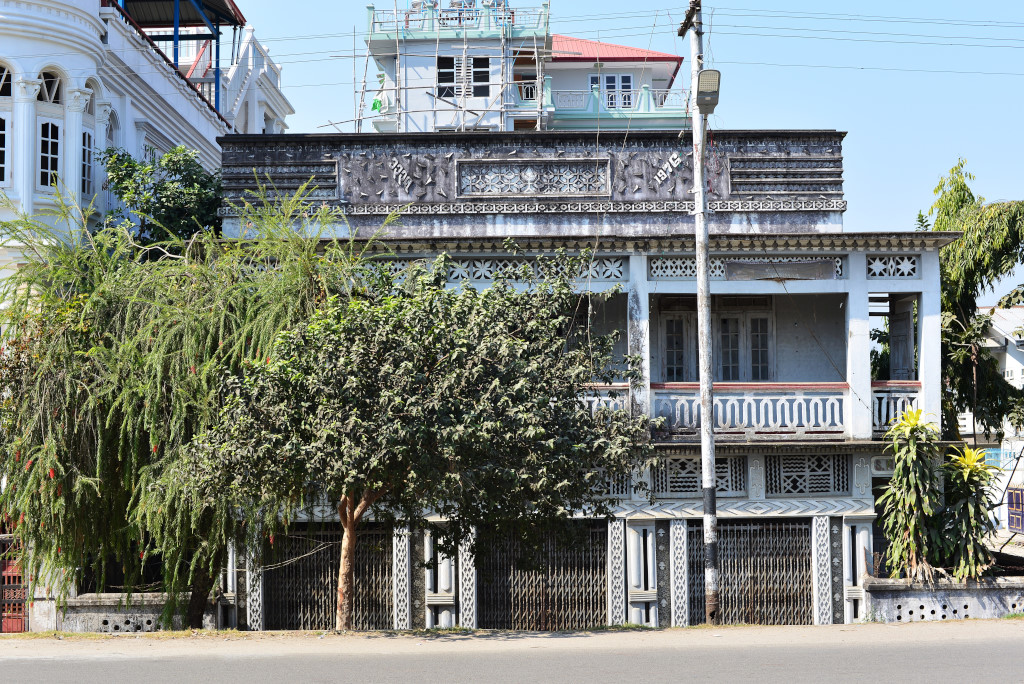
Now an argument ensues as to how I can pay, myself insisting that I pay in kyat, but she tells me I need to pay in U.S. dollars. No, no and no – if the ATMs dispense kyat, then I pay you in kyat also. Finally, she calls the airline for assistance, the agent with Myanmar Airways confirming that I can pay in U.S. or Burmese currency, but only in cash. So where is the problem? The crestfallen agent at the travel agency tells me she had misunderstood the word ‘kyat’ thinking I had wanted to pay by credit card. A round of apologies ensues as to her mistake – but why should she apologize for the fact that I don’t speak her language, and expect her to speak English?
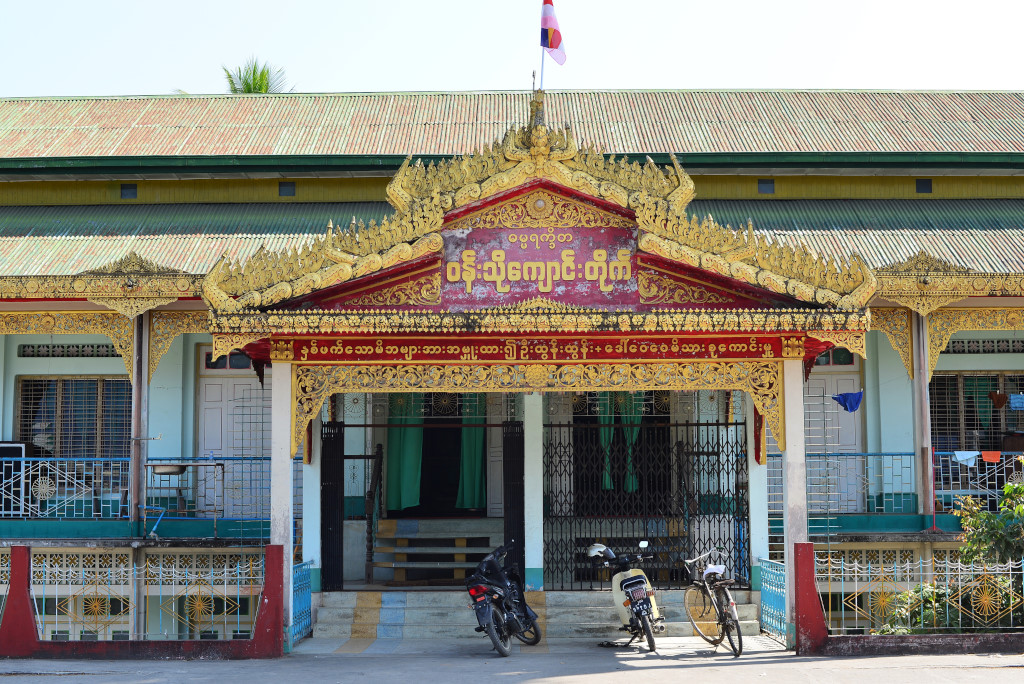
Further to the north, I enter the Kachin Manaw park, and wonder of wonders, the narrow building set to the back of the lot is actually an exercise centre, and yes, I can definitely justify spending a drop-in fee of 1,000 kyat for a quick workout.
It would seem that the shacks laid out along the waterfront sandbar comprise the restaurant the Americans I had met at the YMCA spoke so highly of. I skid downhill through the loose sand towards the assembly of buildings, the largest one seemingly a huge food preparation area, the next in size a large, thatch-covered seated area, the remaining thatched gazebos anchored on large and elaborately crafted wood sculptures.
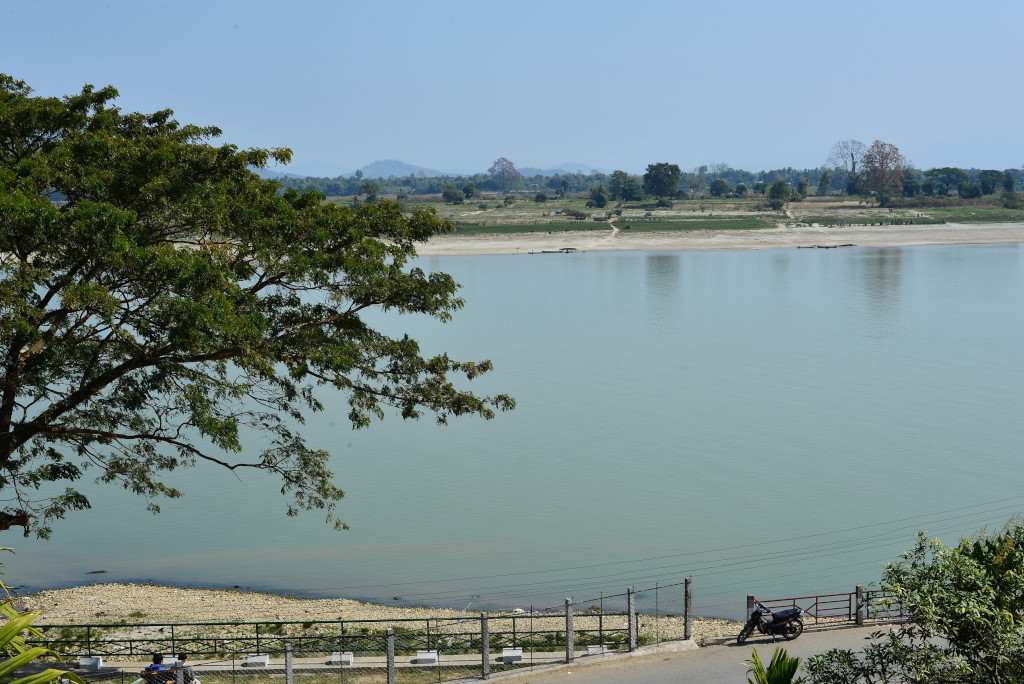
A Chinese-looking group discusses self-importantly in a language that is definitely not Mandarin, looking occasionally vaguely in my direction. There is no menu, and the one server who speaks some English confirms that the food here is traditional Kachin, but for the inflated 5,000 kyat price tag can only confirm that they offer chicken, fish or pork. Can I see any of the food prepared or do you at least have any pictures? No? Maybe some other time then …
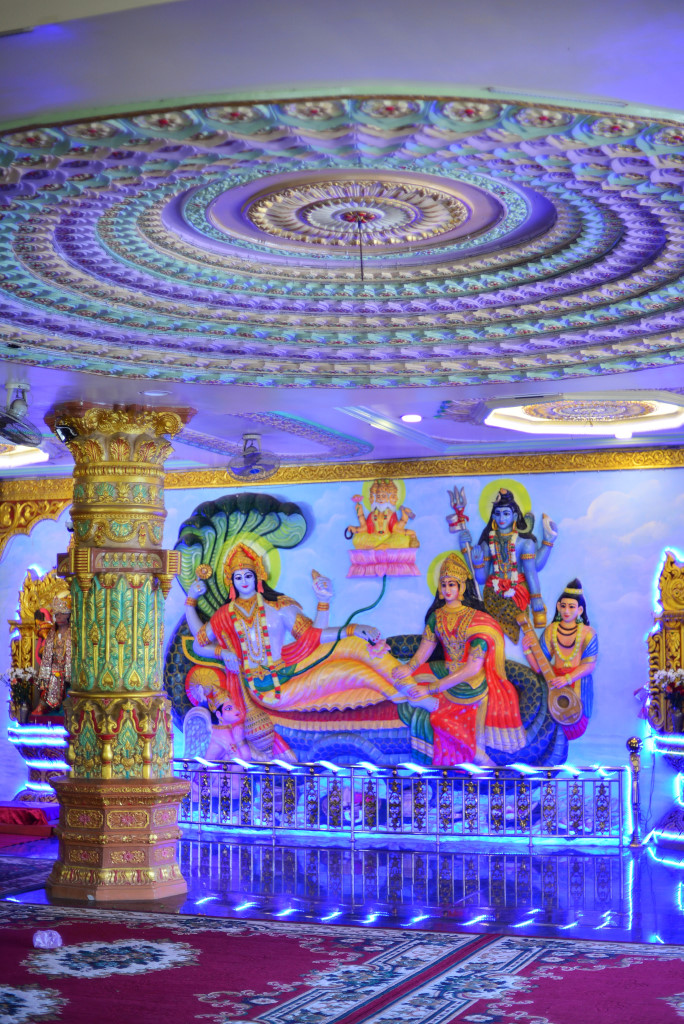
Cafe 60 catty corner from the park will definitely do as alternative, what with its attentive and definitely underage staff, vaguely interesting paintings of local human subject matter hanging on the walls (already a huge standout in this country) and well-stocked English menu, however abstruse its language may be.
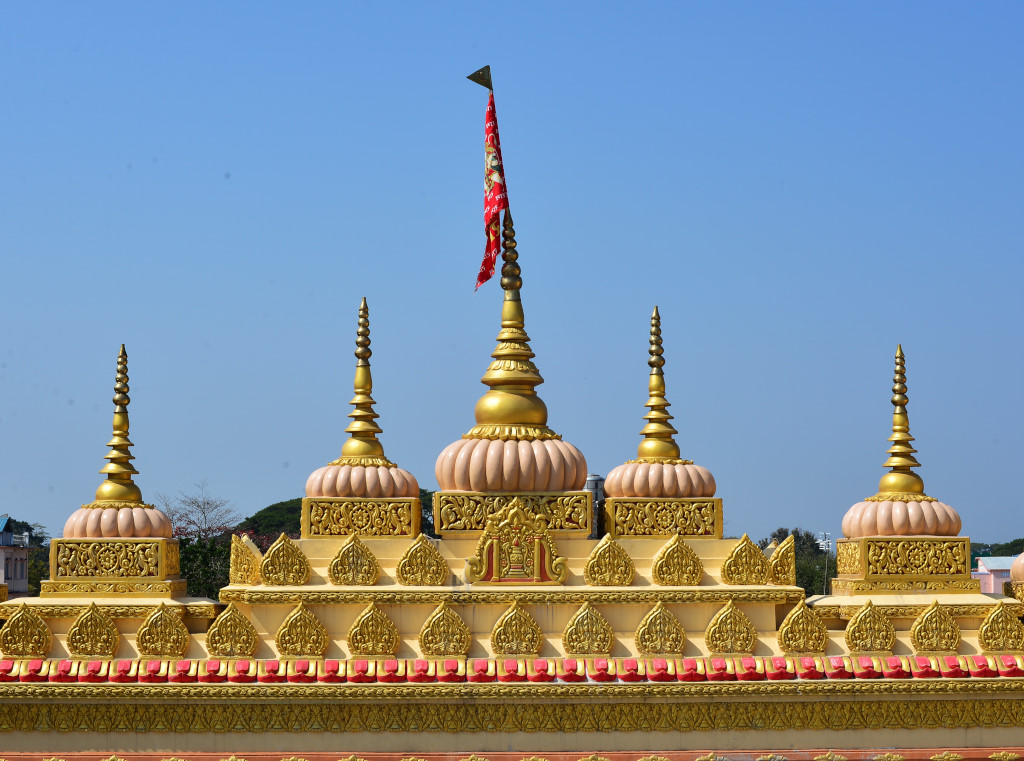
I am not disappointed. As is typical in Myanmar, the avocado and grapefruit juices are pure, and not diluted with water or amended with sugar, with a few solitary ice cubes rendering it perfect. I have a craving for stir-fried noodles, and this place does not disappoint, what with the pad thai I am served with loads of flavour. The highlight of my lunch is the tea leaf salad, akin to the salads I had on my last day in Mandalay, consisting of what I presume to be a mix of peanuts, sesame, toasted soy nuts, finely chopped small chilies, garlic, tomato, and cabbage, amended with some soy sauce and oil, or at least such is my impression.
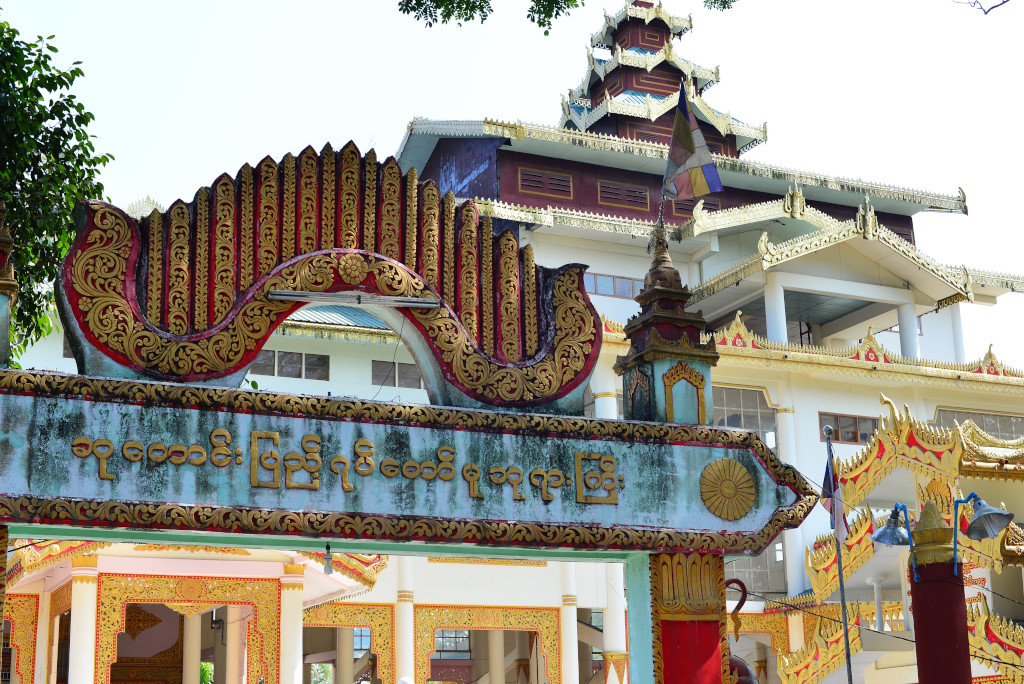
But where is the pagoda with the reclining Buddha I heard so much about? On the north end of the park, I wave to a girl walking along the other side of the fence, calling to her as to the whereabouts of the temple. She has no idea what I want, and enters the adjacent house, calling to someone else, an elderly man now approaching the fence and asking me slowly in English what I want.
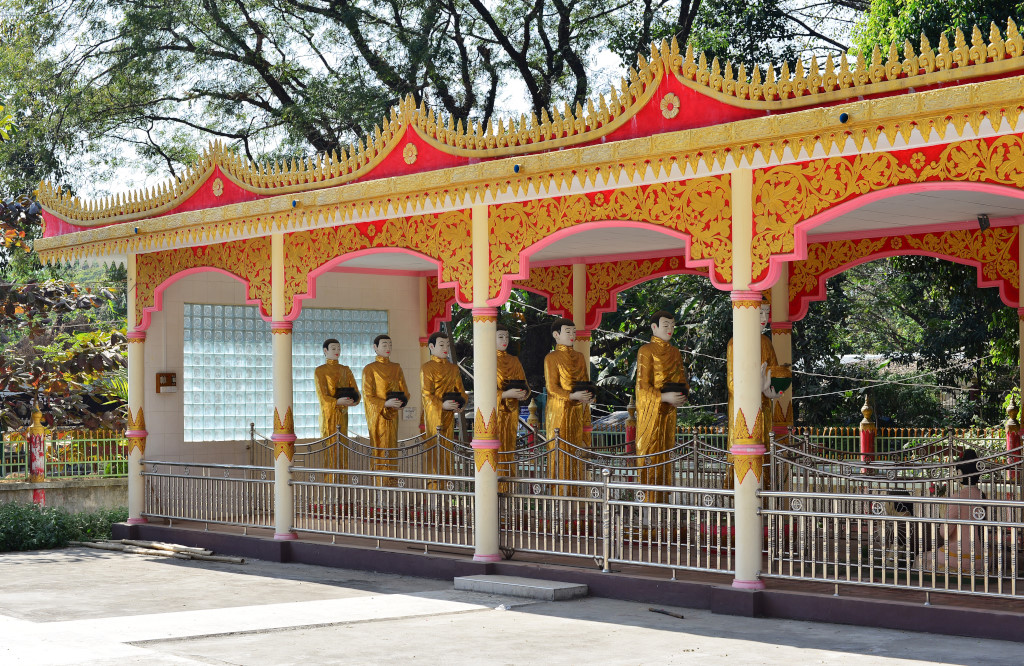
Where is the temple with the reclining Buddha that should be around here? What temple – do I mean a church? This is a Christian housing compound, he tells me. Looking around the neighborhood, it had in fact seemed very obvious that there are a lot of churches. No, a Buddhist temple, with a reclining statue of Buddha, I mimic the shape of a corpulent belly with my hands, then clasping both hands to the side of my head in sleeping motion. I imagine he could be thinking I am a complete imbecile, but it wouldn’t be the first time.
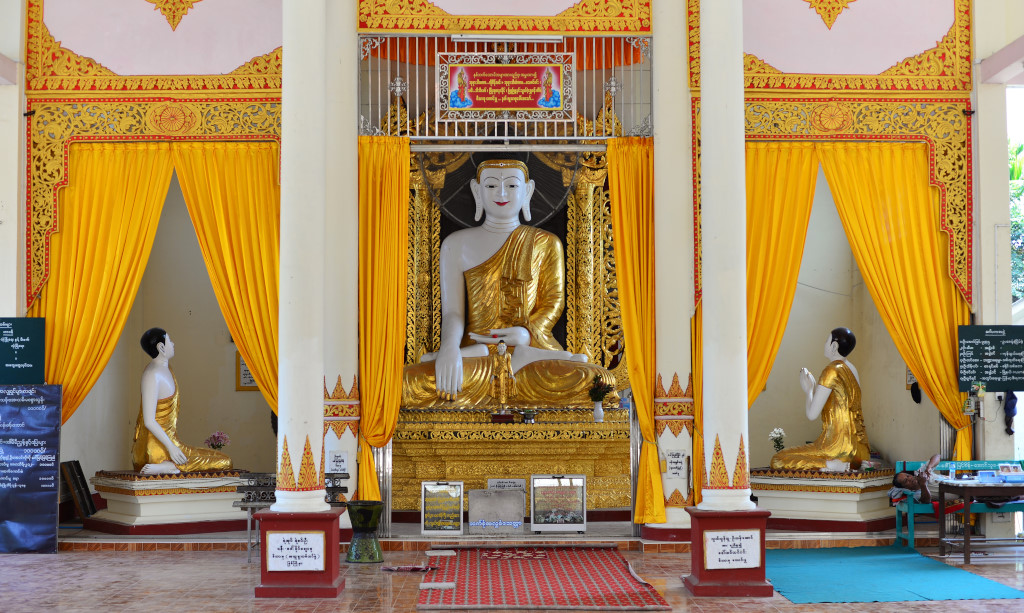
No, no, the Buddhist temple, repeating the name of the Sutaung Pyi Paya from my crude map of the town. Now they understand, pointing me to the south side of the park. More questions to the confused and somewhat astonished passers by, and then finally, I enter the grouping of compounds that comprises the temple in question, a small golden stupa with a rabid dog wandering the broad plaza, two beggars at the gate, and a romantic young couple installed at the far end. Three women at the vihara with the tall, golden statue of standing Buddha eye me with what I take to not be the most innocent of intentions, but the big attraction is the gigantic reclining Buddha in the third compound.
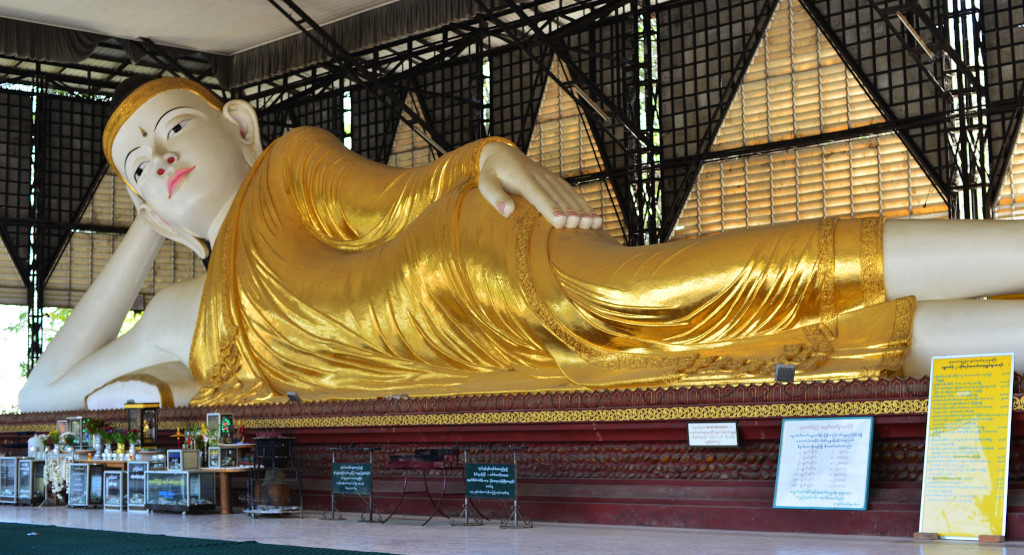
Now onward on my journey, towards the bridge that crosses the river. The very fact that any foreigner would want to head into the villages on the east side of the river should be a red flag to immigration officials, never mind a 6’4″ individual on a decrepit and tiny girl’s bicycle. The paranoid side of me wonders as to how safe the pedestrian ramp of the bridge crossing the Irrawaddy could be, considering that we really are in the middle of nowhere, and I see absolutely no one walking on the walkways.
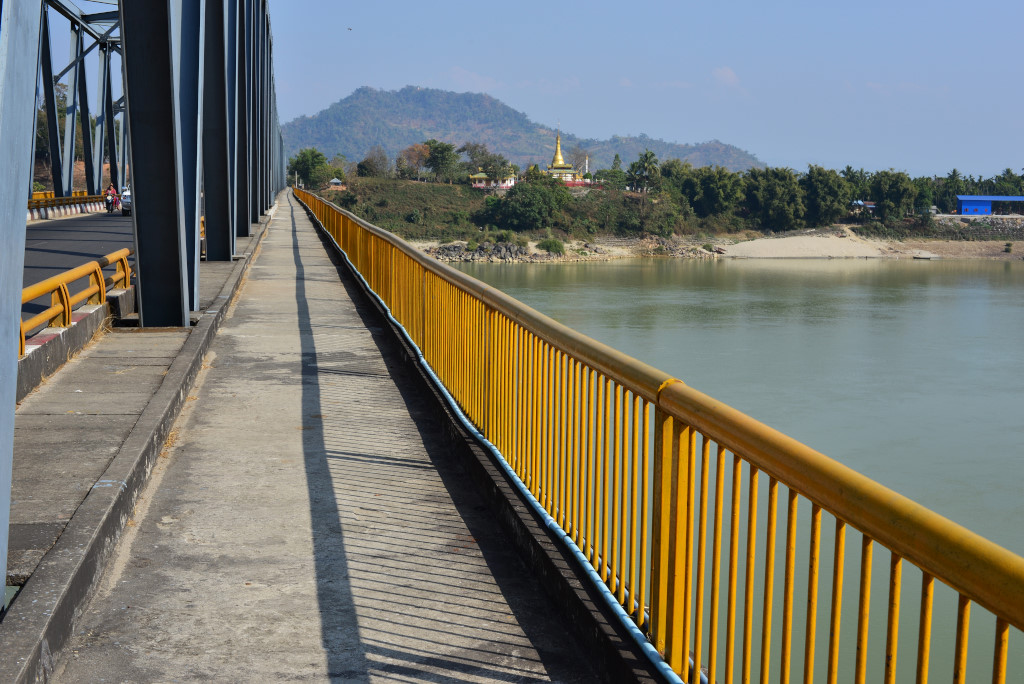
I try my luck at photographing vehicles passing by, the sight of the tiny wooden boats set against the massive Irrawaddy river photographically mesmerizing, although I am not sure as to the potential resolution. Reviewing the photos of the distant canoes set against the vast gravel shores of the broad river, I recognize the incredible optical precision of the camera I am carrying. There is no way I would be able to see this kind of detail with the Nikon 5000-series APSC camera I used to carry, especially with the mediocre zoom lenses I was using.
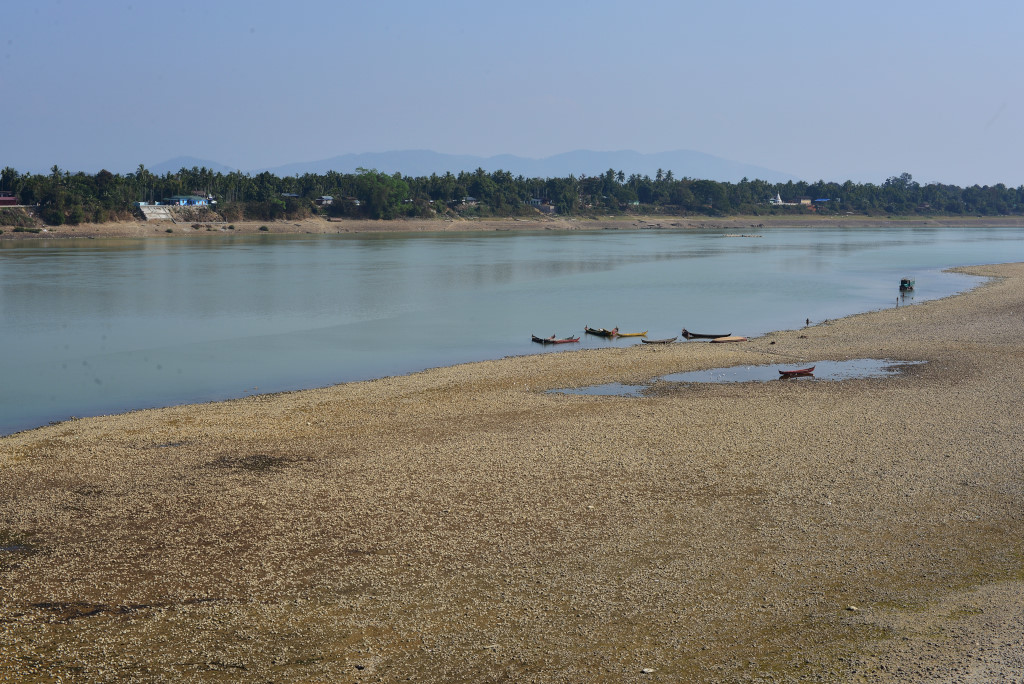
The initial cluster of immigration officers ignore me as I amble by slowly, but as I pass the second booth I hear aggressive shouting behind me, and think it probably is a good idea to stop and investigate, unless I want to risk being targeted with drastic action on behalf of the Burmese military. Yes, the immigration officials want me to stop and report to them, but the effort is totally sham, because in the chatting that ensues, no one actually looks at my passport or logs anything about me. These men must just be bored out of their minds, and it looks like they may also have very differing temperaments.
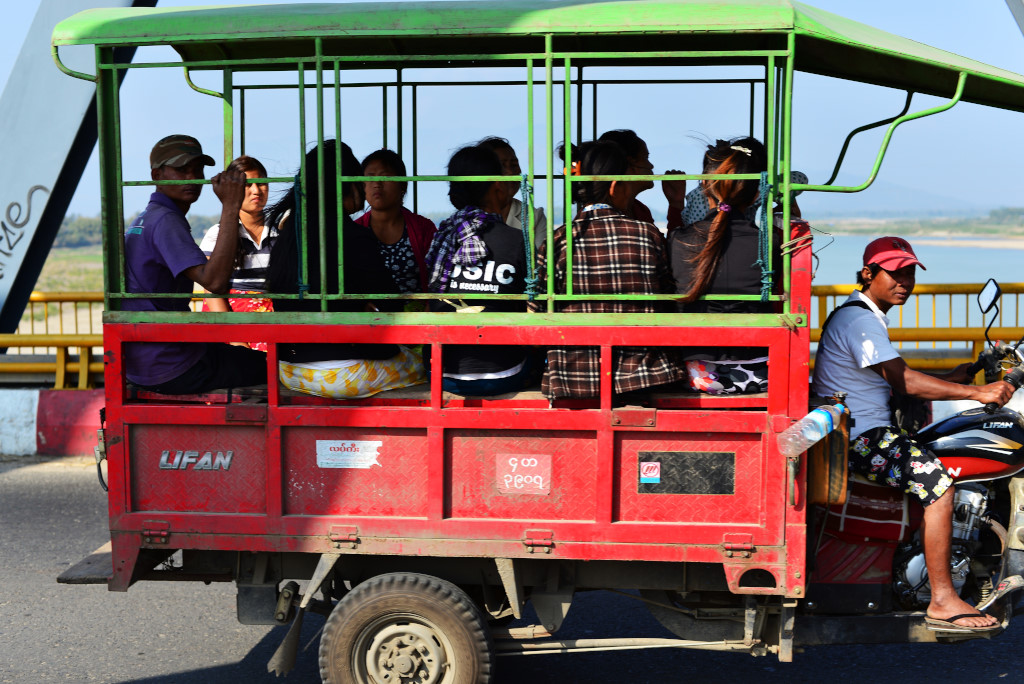
A young uniformed man steps out and greets me politely to the somewhat amazed, indifferent and resentful stares of his colleagues. He is Lisu, from Putao, pointing out which coworkers are Kachin and which are ethnic Burmese. In a probably not very politically correct move, I ask the men to confirm how I can identify which people. The Lisu look very oriental but have more narrow faces than the broader-faced Kachin.

The man I am speaking with grins and confirms that yes, he like other Kachin have wider faces, at which the rest of the group laughs. And yes, the Kachin and Lisu are lighter-skinned than the Burmese, whereupon I point in the direction of the house where the man who initially aggressively accosted me has vanished into, no longer welcome in our discussion. As the Lisu man chats with me, others listen in politely, eager to contribute, although he speaks the most English. He tells me I should visit his region, although it would be somewhat ironic hearing that from an immigration official, because he should know that the region is closed to tourists.
Leaving the immigration post behind, there really isn’t much to see, just occasional houses, some interesting traditional structures, but most not, a school, a few gas stations, and a scrubby landscape. I am not sure how far I want to ride to Whyno, given the terrible exhaust fumes along the road, the ancient trucks billowing black fumes as they pass.
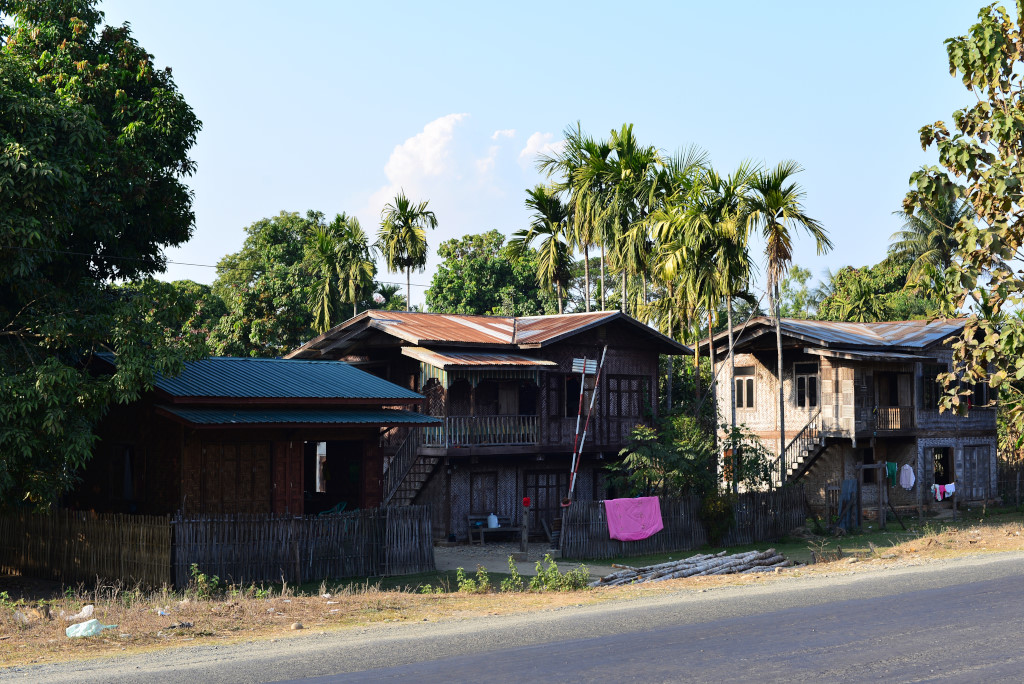
As everywhere else, small stands are set up by the roadside with water and whiskey bottles filled with petrol, shacks set to the back of dusty properties with a few glass cases with dried foods and general household necessities. Outside of town people are exceedingly friendly, the smiling, waving, and people shouting greetings incessant. One gratifying interruption is provided by the group of young school children in matching white shirts and dark green longyis playing in front of their expansive school compound, only too eager to throw themselves into the picture frame when I pull out my camera.
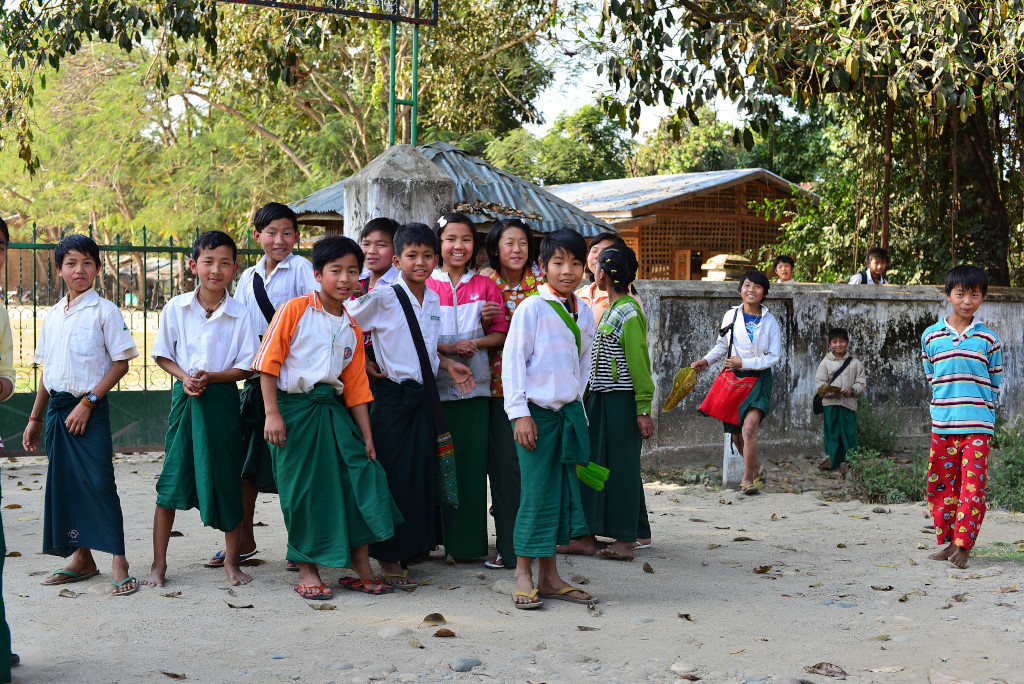
I have little sense of how far I am advancing towards Whyno as the afternoon progresses. I mentally take into account the time it would take to ride there and back as well as sightsee. I eventually turn back, as I simply won’t have enough time, the air quality is atrocious, and there is really nothing to see en route – never mind the fact that the bike is also hard on my knees and legs given, that the seat is far too low.

I am feeling very parched and somehow unwell, a feeling that gets worse as I ride back into town. I am wondering if I am suffering not just from dehydration but reacting to MSG in the food here, as I have this pasty and astringent feeling in my throat that I seem to recall having experienced before. The roadside vendors have water to sell, but not cold, as it turns out that they probably have no electricity on this side of the river.
Some comical relief is provided at the orange vendors’ stands on the far side of bridge, the younger women competing for business with an older and quite inebriated man, the resulting conversation absurd, but the oranges very sweet and juicy.
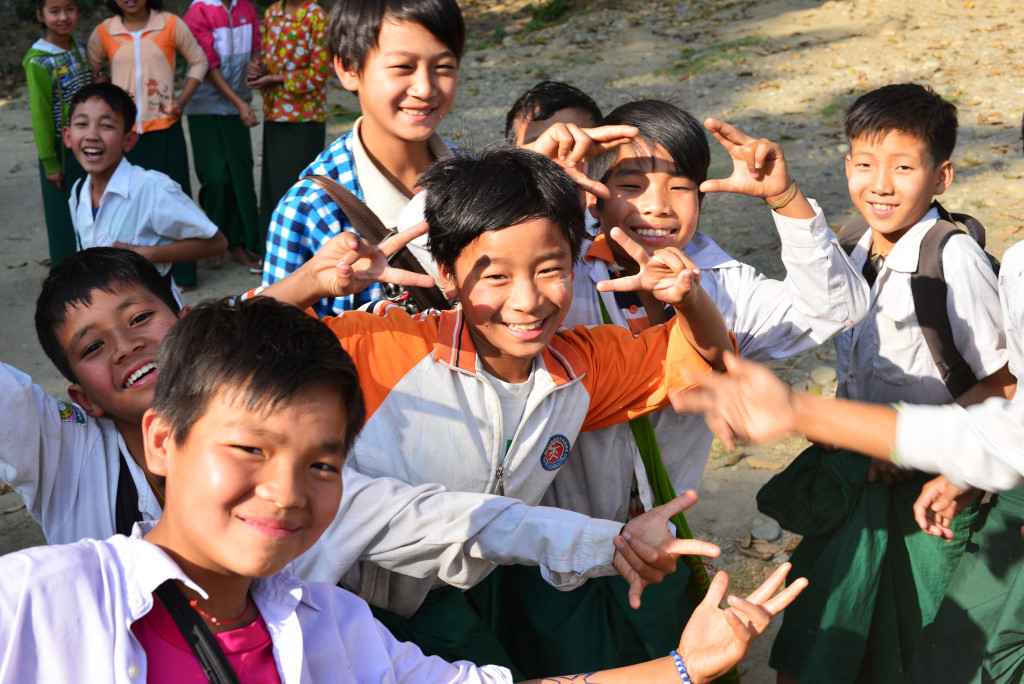
Now my favorite pastime, working out at the fitness centre at the Kachin Manau park, the modern appearance of the equipment earlier having been more than somewhat deceptive. The gym is divided into two sections, the weight section on one side attracting only young men, and on the other, young women busy with cardio. Whenever I look into the cardio section, the women smile and wave, largely focused on enjoying themselves while they do the exercises, unless the self-absorbed men.
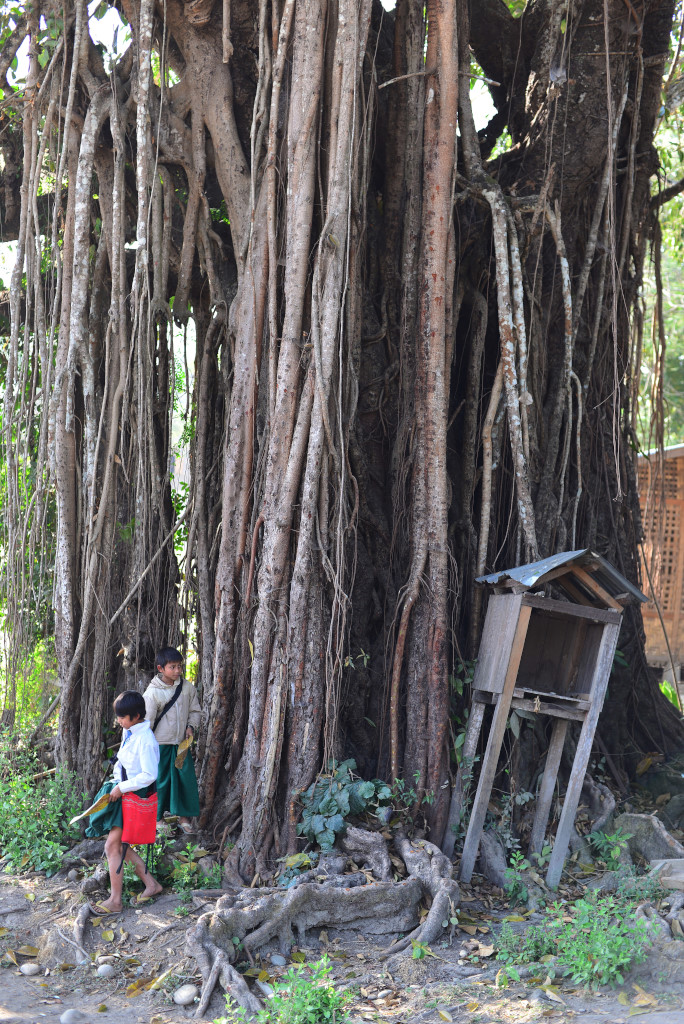
The men on the other hand can be divided into the same two groups you see in gyms all over the world, the “in” crowd that is already somewhat bulked up, self-importantly doing all their exercises while the second group of typically younger and much small boys half-heartedly do their repetitions while staring enviously at the older and bigger counterparts. Then I come along and threaten to break the flimsy equipment not built for heavier weights.
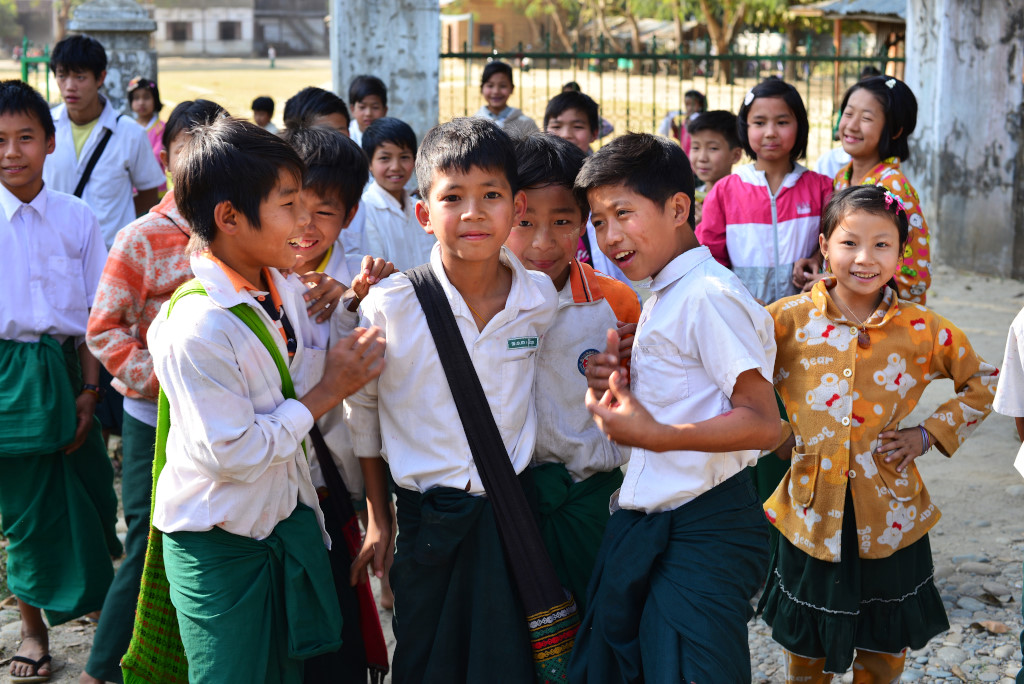
I had considered having dinner at the restaurant sprawling by the river, but would also like to get back into town early enough so as to have time to get some writing done prior to meeting my friend from the immigration department. I return to the centre along the now-familiar route.
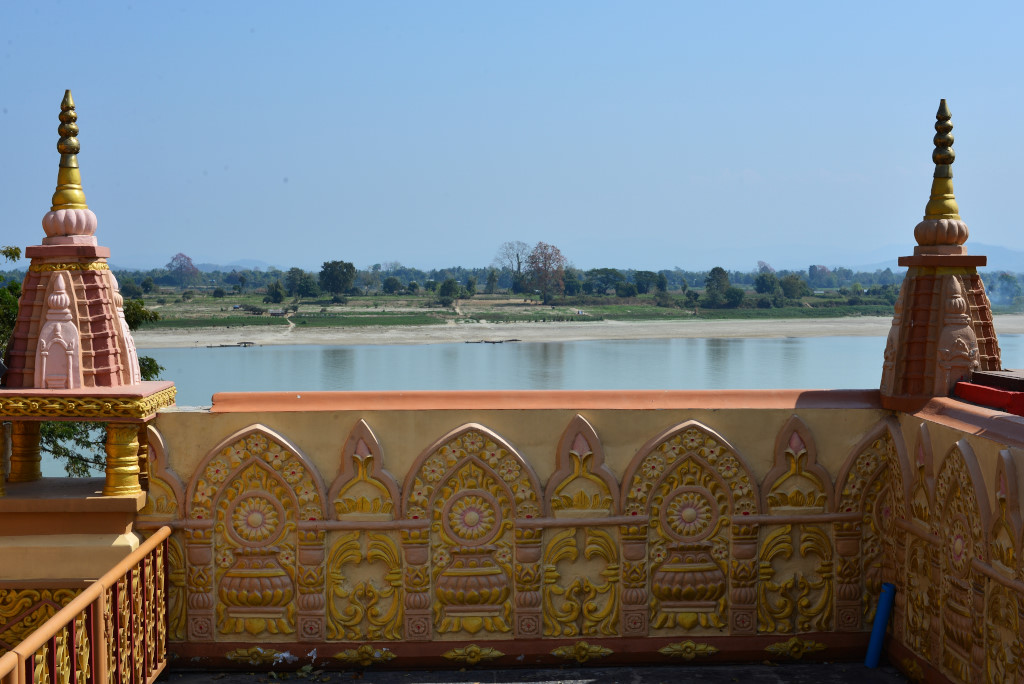
Weaving through the alleys of the centre, all I want at this point is a cold bottle of water. And while everywhere vendors seem to be selling water at room temperature, a very polite woman pointing me to a traditional Burmese eatery that definitely has cold water. A series of misunderstandings occurs before I actually find what I am looking for, but after brief perusal of the contents of the pots laid out on the counter, I can’t for the life of me imagine eating this food … the Burmese curries really take a strong stomach …
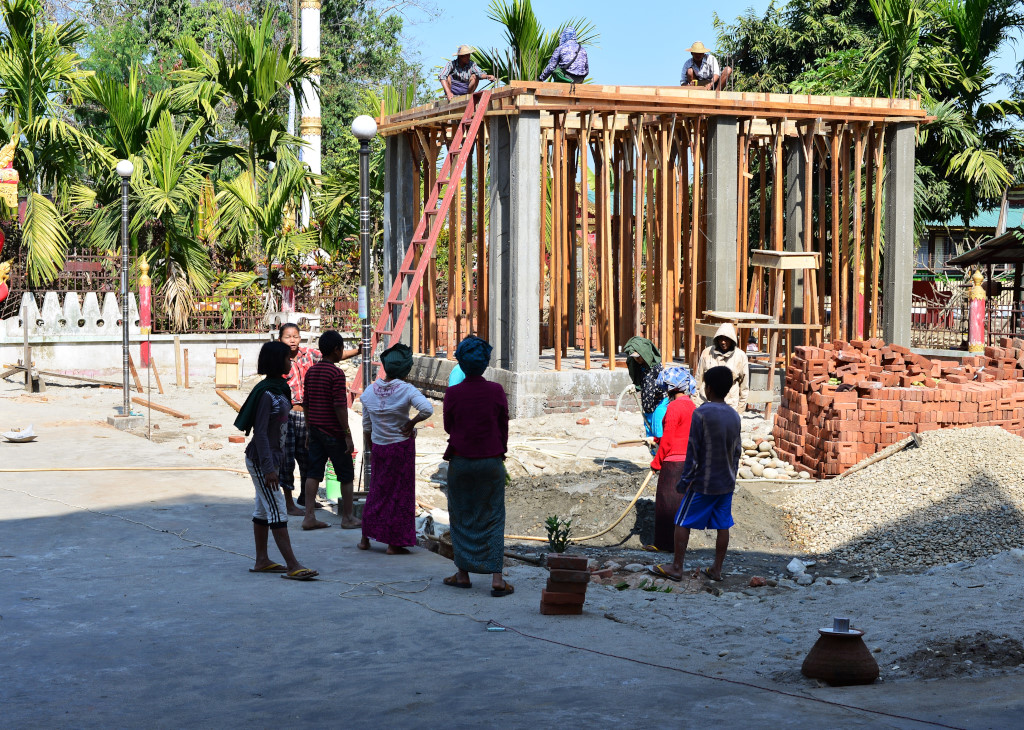
Back in the hotel room, I hear the loud explosions of fireworks going off for Chinese New Year. Incorrectly anticipating the arrival of the Lisu immigration officer much earlier as a result of not having set my computer to the correct time zone, I end up in a faltering conversation with the Kachin receptionist. He is in his fourth year of university and he has a number of brothers and sisters. His parents’ lives are rooted in agriculture, running the large plot of land near Myit Sone that his grandfather owns, although it seems his generation has no interest in following the same route.
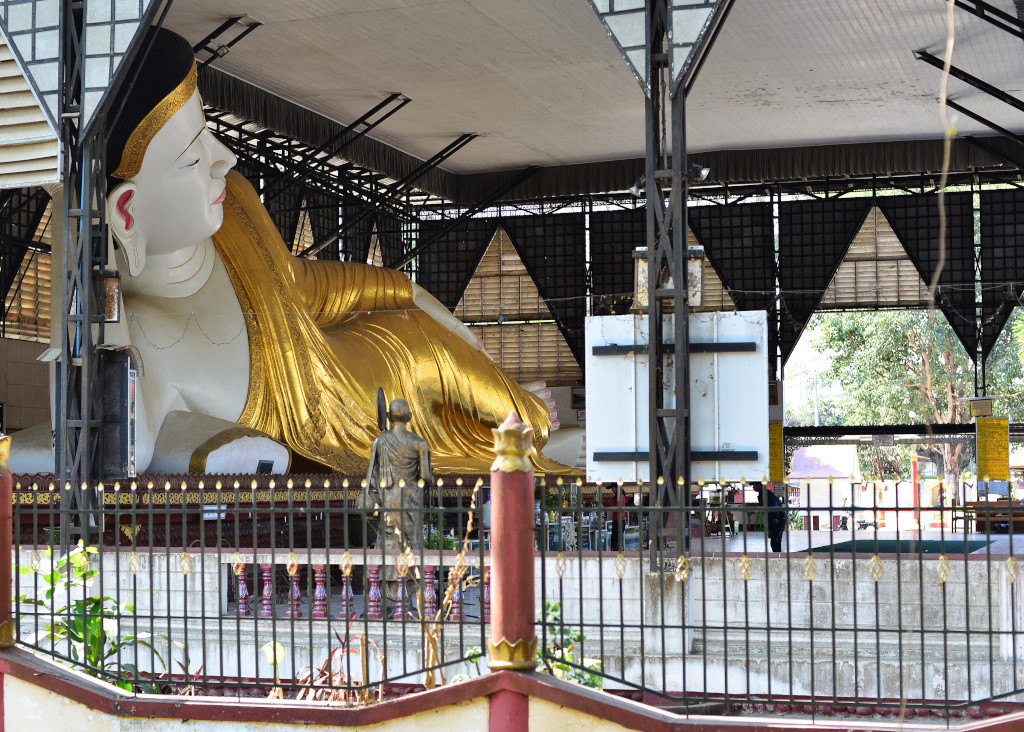
He frankly hates the Myanmar government, and continues that as much as it may be a fantasy, he wants to be a leader of the Kachin Peoples Liberation Army. Of course, both the government and tribal governments have their eyes on the lucrative gold and jade mining that takes place in the region. If the north of the country did not have the wealth that it does, maybe people would not be bothered to contest control of the region.
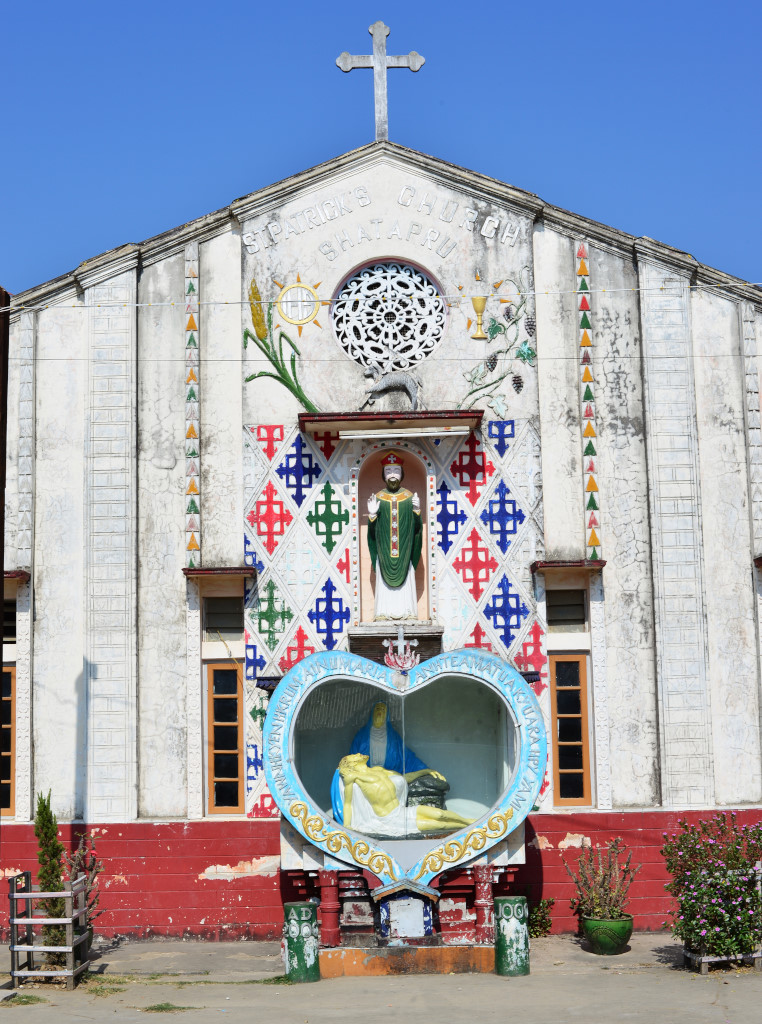
The wealth from these resources invariably concentrates into few hands, many of the people who live in Myitkyina probably being stakeholders, although the population scattered through the remote countryside enjoys a very different standard of living. No doubt the Burmese military and political leaders are benefitting handsomely from the export of resources.
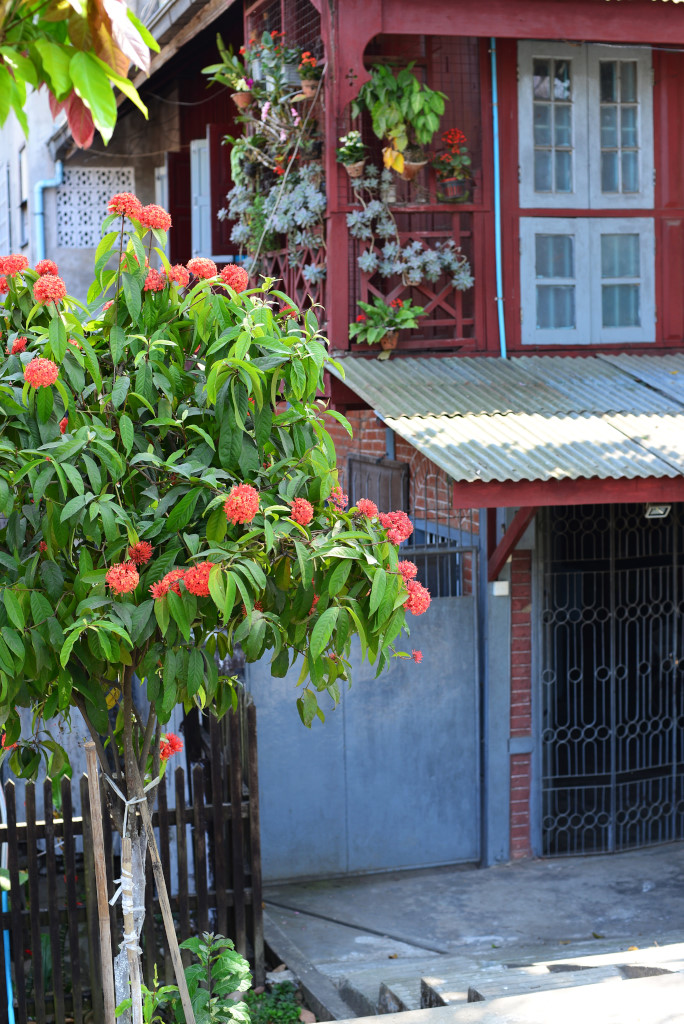
I wonder to what extent this will be a problem as the country develops, although I wouldn’t be too optimistic. Once upon a time you would not want to risk publicly speaking about this subject matter, but now people seem to say whatever they think. Nonetheless I should try and keep my opinion as neutral as possible given that I am a guest in the country.
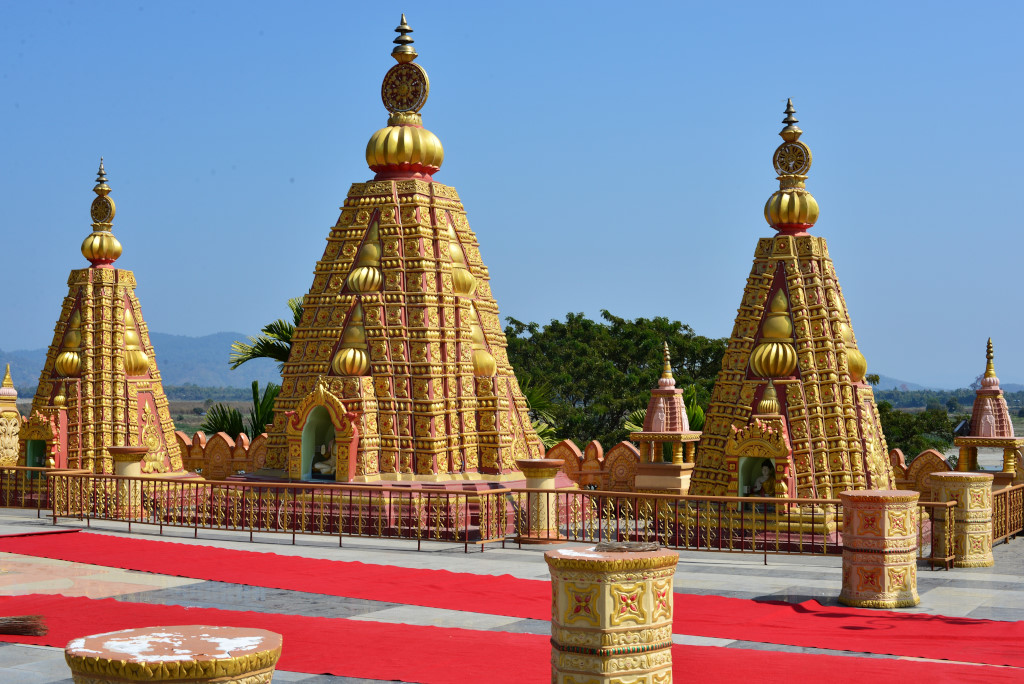
My friend from the immigration office appears wearing a garish yellow jacket, toque and thick scarf, as if he was heading out to spring skiing, although the temperatures are in the low 20s. I would really like to explore the night market, but he wants to go to a Burmese restaurant, which happens to be one of the eateries next to the train station. Why can’t we go to the Kachin eatery next door, I plead, since at least I could tolerate the food – but no, he wants to go to the Burmese place. Well, the beer will be palatable, anyway.
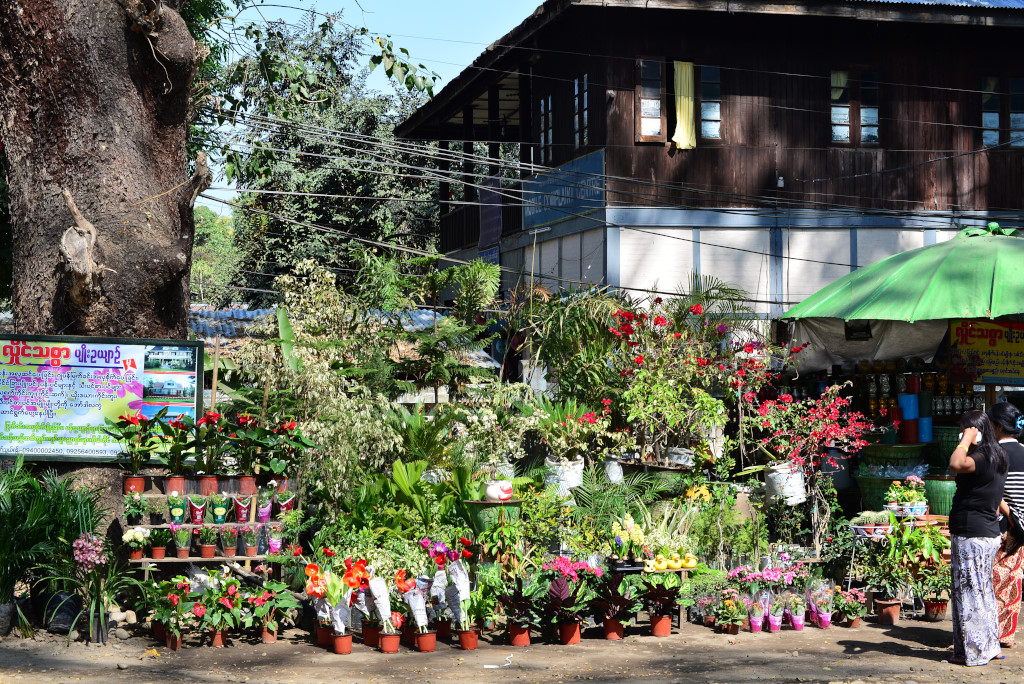
I go off on my usual tangents, misled by his carefully enunciated English earlier on today. He looks at me impassively, as if he may not understand much of what I am saying, although I hope he is making at least some sense of his passionate outburst.
His family is all in Putao, a region he loves very much, but he does not want to go back, since he likes Myitkyina. He tells me he used to see a lot of foreigners passing through the Putao area, but they came on climbing tour groups and were not traveling freely. The remote regions in Myanmar were never strictly sealed off to outsiders, as foreigners could gain access by means of permits acquired with some degree of persuasion.
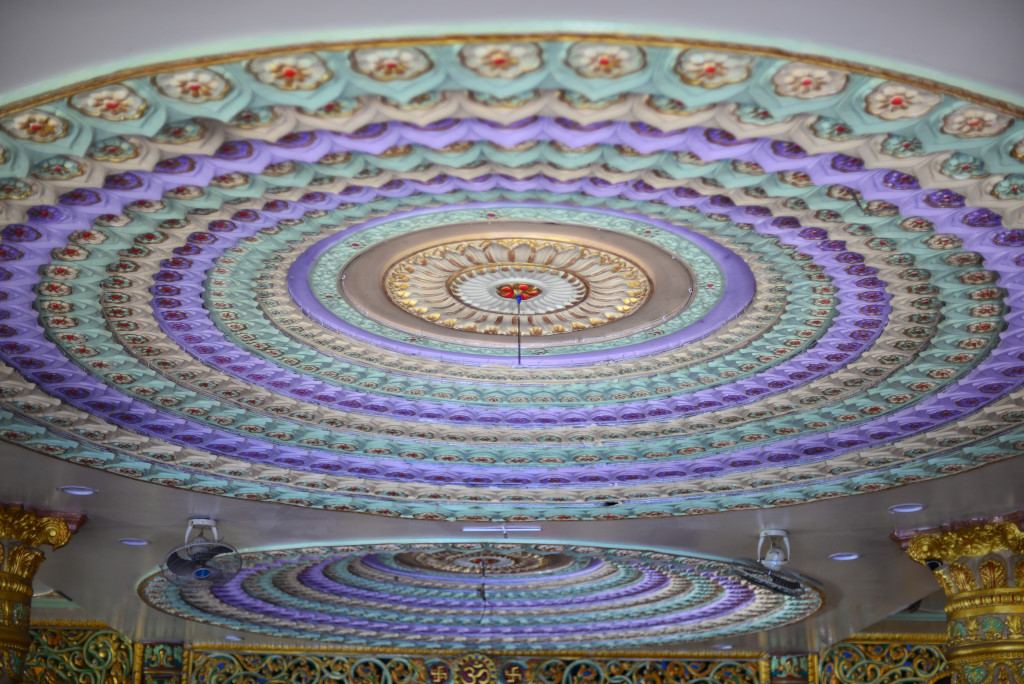
He works for Myanmar Immigration now, but spent two years studying at a seminary school in Yangon. His wife is actually a pastor, but had to take time off to take care of their two-month-old child. He wants to leave the country and learn English, although that is an expensive and unrealistic fantasy that would not lead to much. For one, if he actually made it out of Myanmar into another country with a much higher standard of living, he would not be coming back here. I tell him his English is really not that bad, although he should consider heading south and working for some tour group or exclusive hotel in the Mandalay, Bagan or Yangon area.
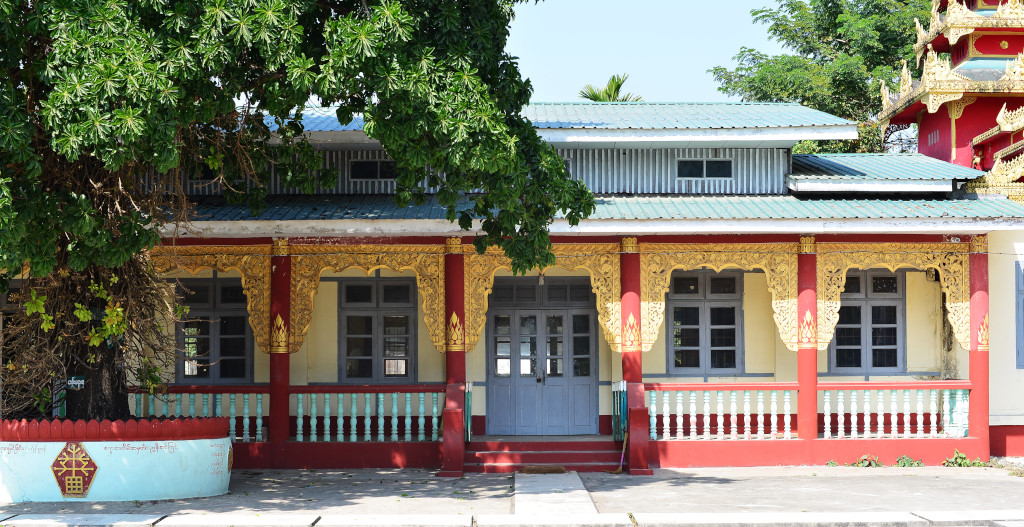
Considering that the bulk of tourists coming here seem to be French, he should consider learning French in addition to improving his English, which would make him eminently marketable. The dead time he spends at work would be a good time to listen to educational podcasts. I tell him that these plans take time to realize, and that at 28 years of age he doesn’t have forever – of course, I should talk.
He currently earns 7,000 kyat working at the immigration office, not bad for a job that involves effectively doing very little. I can imagine that it must get intensely boring at the office, just standing around all day and doing nothing, having to be polite to people you basically can’t stand. I joke that he should create a reality show based on the time he spends at the immigration office, but am not sure he actually understands what I am saying, nor if he did would the Myanmar government take too kindly to such a thing.
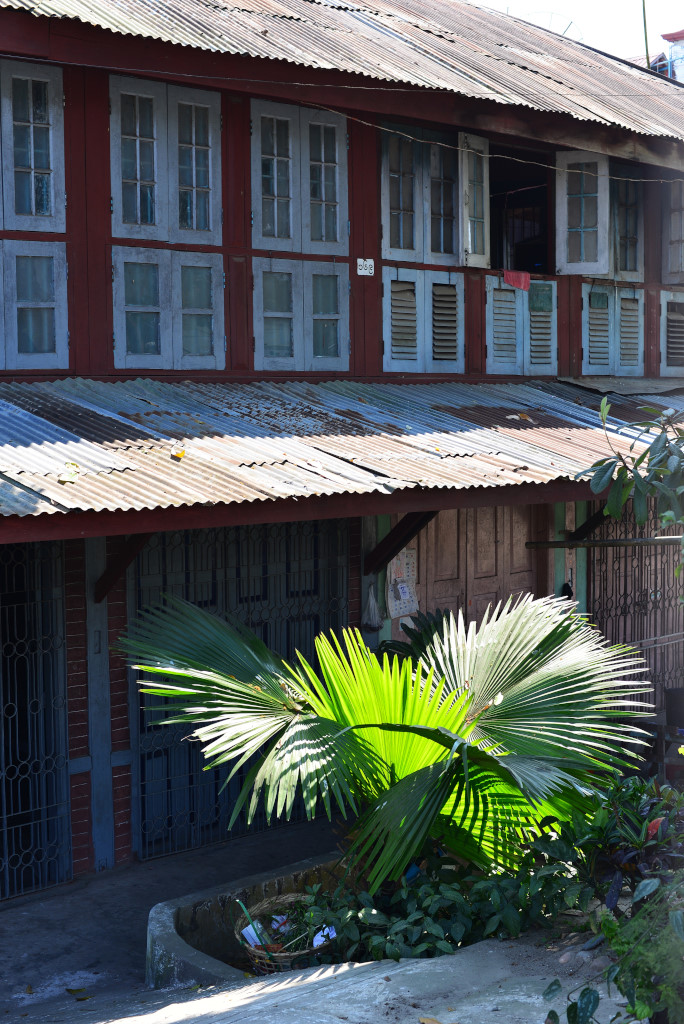
When the north of Burma opens up, it will be a total zoo, this small mountainous region the last threshold to an unspoiled Shangri-La that the unwashed hordes of tourists from Europe and Russia will be dying to sink their teeth into, rife with exotic culture, topography, Buddhist temples (downplaying the fact that most people here are Christian), beautiful arts and crafts, gorgeous people, and food that is actually quite good. Even though the bulk of money will pass inevitably through package tour groups, having some budget boutique hotel stocked with local arts and crafts, English-speaking staff, low but not giveaway prices, bicycle, motorcycle and kayak rentals, excursions to interesting places in the region, and some seemingly funky bar that keeps the throats of Englishmen and Australians well-lubricated while pumping out the same three Bob Marley songs may be a metaphorical gold mine.
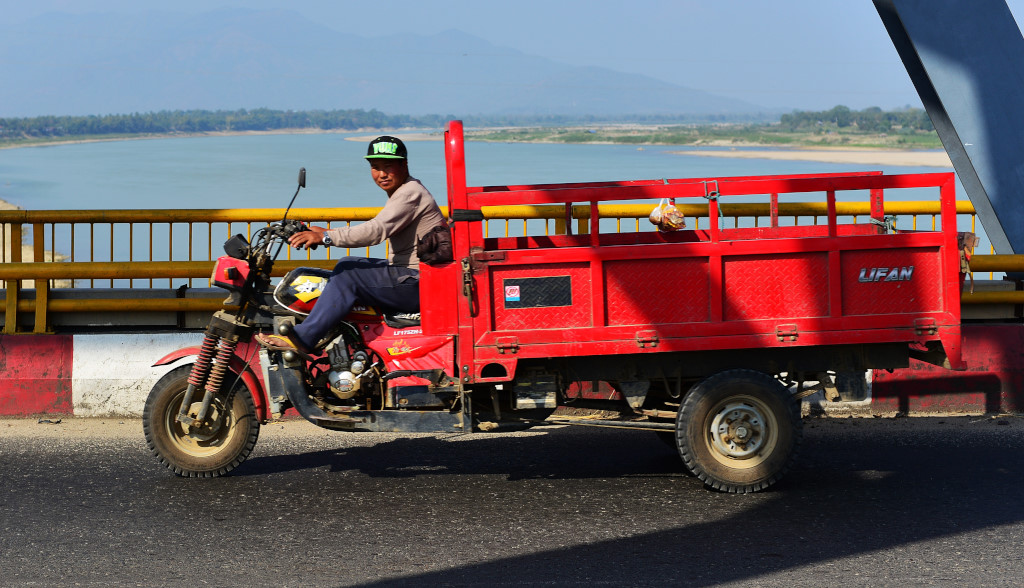
In fact, a Chinese man has approached him with a proposition to coordinate the building of a hotel in town, but he is not sure how to proceed.
A young man surrounded by a number of other workers stumbles sobbing from the back of the restaurant with a blood-spattered hand, apparently having seriously cut himself while chopping food, a crowd gathering around him in front.
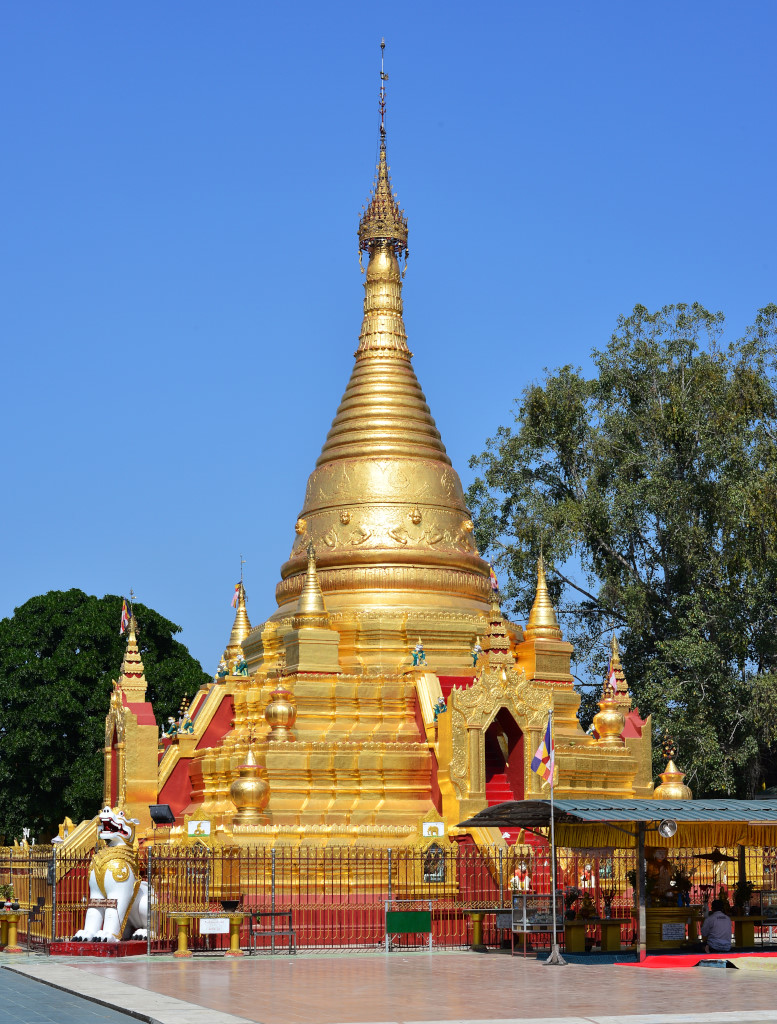
‘When will I be coming back to Myanmar?’ my Lisu friend asks. I hate to say – I was wary even of coming on this trip, which may well be my swansong to Asia, at least as far as traveling is concerned, although I can always justify spending more time on the road somewhere in the world. Of course, if I was living in the region it would be different.
When we finally leave the restaurant the young tormented man we saw before is now relaxed, his injured finger bandaged with gauze …
